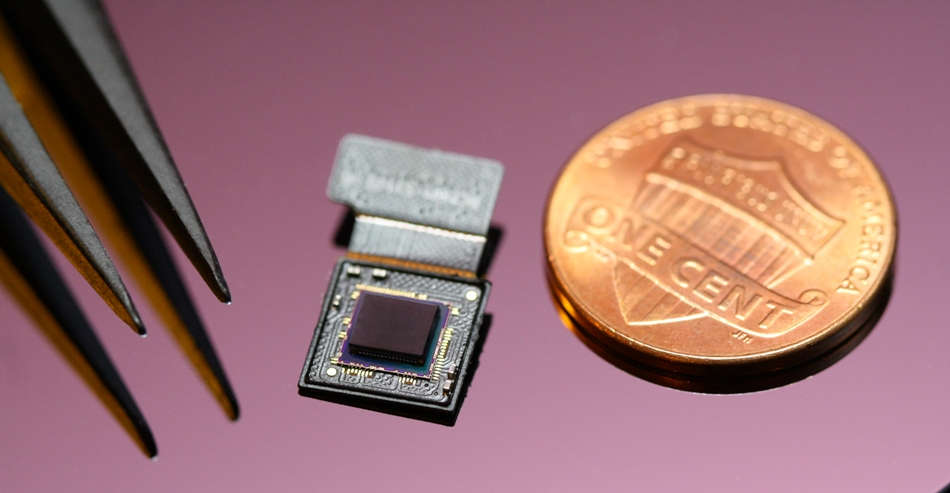Mar 24 2020
Inspired by the special structures of biological vision systems that occur in nature, researchers have designed ultracompact imaging systems. Under the guidance of Professor Ki-Hun Jeong, the researchers have developed an ultracompact camera that can capture high-resolution and high-contrast images.
 The ultrathin camera. Image Credit: Professor Ki-Hun Jeong, KAIST.
The ultrathin camera. Image Credit: Professor Ki-Hun Jeong, KAIST.
Packed with micro-optical elements like multi-layered pinhole arrays, inverted micro-lenses, and gap spacers on the image sensor, the camera offers a field of view of 73° and an entire track length of 740 μm.
Taking cues from the eye structures of Xenos peckii, the paper wasp species, the researchers totally suppressed optical noise between micro-lenses while decreasing the thickness of the camera.
The camera has been successful in the display of high-contrast clear array images obtained from small micro-lenses. The researchers combined the arrayed images into a single image via super-resolution imaging to further improve the quality of the captured image.
The compound eye of an insect consists of excellent visual characteristics like high motion sensitivity, wide viewing angle, and a large depth of field, while a small volume of the visual structure is retained with a small focal length.
Of all, the eyes of Xenos peckii and an endoparasite that occurs on paper wasps include hundreds of photoreceptors in a single lens in contrast to traditional compound eyes. Specifically, hundreds of photoreceptors are found on the eye structures of an adult Xenos peckii, on a separate eyelet. This provides design inspiration for imaging applications or ultrathin cameras since they contain higher visual acuity compared to other compound eyes.
For example, cameras designed with inspiration from Xenos peckii’s eye offer a 50 times greater spatial resolution compared to the ones based on arthropod eyes. Moreover, the effective image resolution of the Xenos peckii’s eye can be enhanced further by making use of the image overlaps between adjacent eyelets. This special structure provides higher visual resolution compared to the eyes of other insects.
The research group realized super-resolution and high-contrast imaging by using an innovative arrayed design of micro-optical elements containing inverted micro-lens arrays and multi-layered aperture arrays stacked directly over an image sensor. This optical component was combined with a complementary metal-oxide-semiconductor image sensor.
This is the first time super-resolution imaging has been achieved, which involves obtaining a single combined image with high resolving power and high contrast reconstructed from high-contrast array images. It is predicted that this ultrathin arrayed camera can be employed for further advancement of endoscopes, advanced surveillance vehicles, and mobile devices.
This research has led to technological advances in imaging technology. We will continue to strive to make significant impacts on multidisciplinary research projects in the fields of microtechnology and nanotechnology, seeking inspiration from natural photonic structures.
Ki-Hun Jeong, Professor, KAIST
This study was published in the Light Science & Applications journal last month and was financially supported by the National Research Foundation (NRF) and the Ministry of Health and Welfare (MOHW) of Korea.